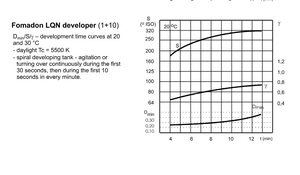Dan Rainer
Member
I recently picked up some AristaEdu 400 in 4x5 and 35mm bulk load. I've really settled into XTOL as my standard developer with HP5 and figured that it would work great with the Arista 400 as well. I was banking on either the grain reducing solvent power of replenished XTOL to tame the grain, or the speed boosting power of diluted XTOL to tame the shadows.
However, as I've since read on this forum, XTOL struggles with Arista/Foma 400. Using a mixture of Stouffer wedge and 35mm testing, I'm getting a rating of 25ASA in replenished XTOL, 25ASA in XTOL 1:1, and 50ASA in XTOL 1:2.
I also tried DD-X 1:4, hoping the potassium sulfite would render a more usable speed. I got a rating of 32ASA.
Am I missing something? Or doing something wrong? My methodology has been solid for dialing in speed/time for other film/dev combos in the past. Is there a solvent developer that's able to render a full range of shadow values in Arista/Foma 400, preferably at a speed over 160ASA?
However, as I've since read on this forum, XTOL struggles with Arista/Foma 400. Using a mixture of Stouffer wedge and 35mm testing, I'm getting a rating of 25ASA in replenished XTOL, 25ASA in XTOL 1:1, and 50ASA in XTOL 1:2.
I also tried DD-X 1:4, hoping the potassium sulfite would render a more usable speed. I got a rating of 32ASA.
Am I missing something? Or doing something wrong? My methodology has been solid for dialing in speed/time for other film/dev combos in the past. Is there a solvent developer that's able to render a full range of shadow values in Arista/Foma 400, preferably at a speed over 160ASA?














